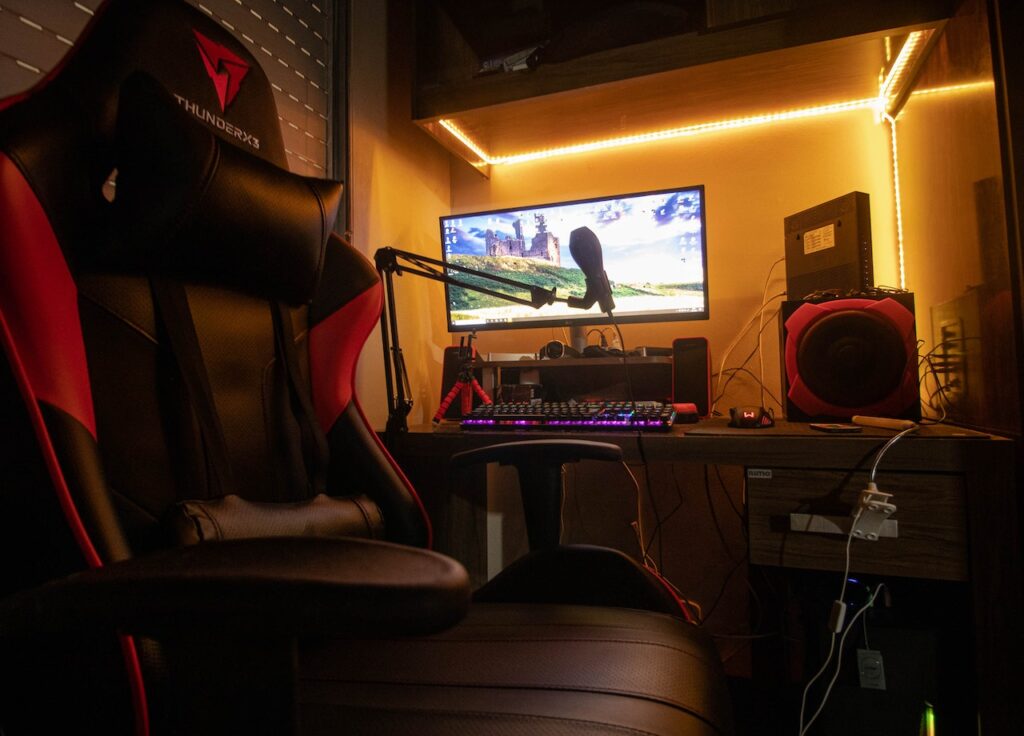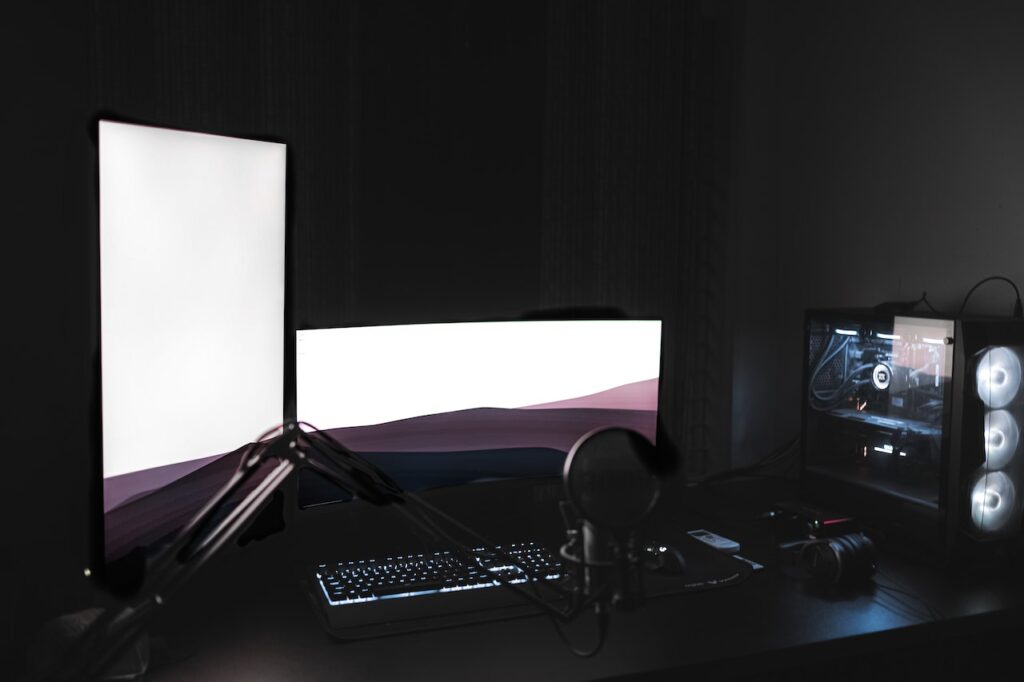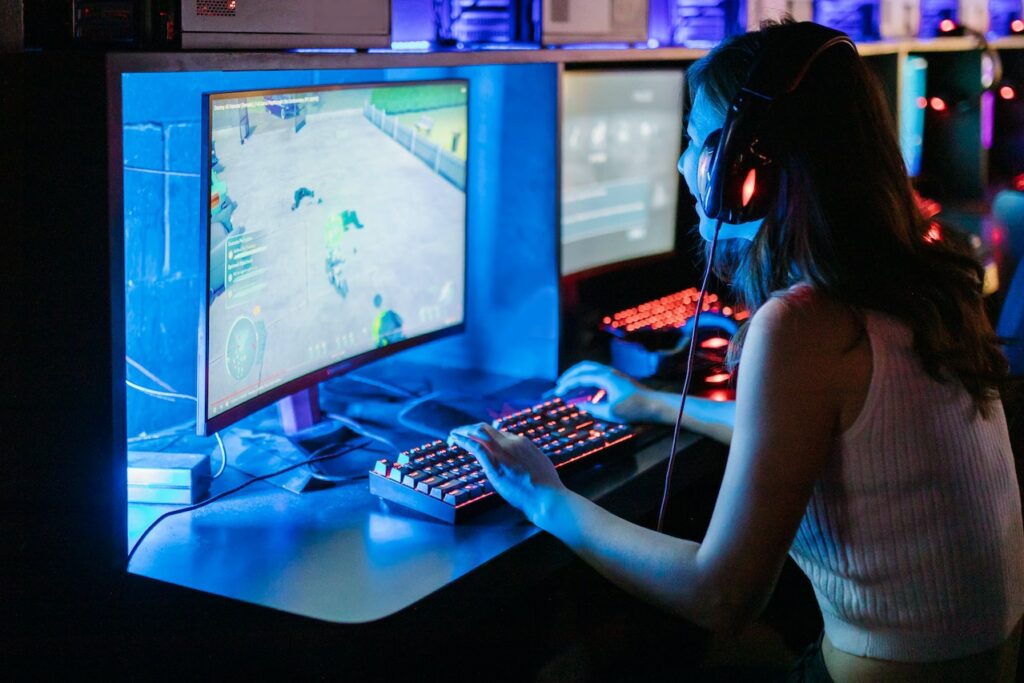Having a proper display brightness for your gaming experience is essential. The industry standard is 300 nits. In any way, the brightness of a gaming monitor can affect your visibility, comfort, and immersion in the game world. But how do you measure and adjust the brightness of your display? And what is the optimal brightness level for gaming?
In this article, we will answer these questions and more. We will explain nits and why they matter for measuring display brightness. We will also discuss what factors influence the ideal brightness level for gaming and how to choose the best display for your gaming needs.
Table of Contents
What is Nit?
A nit is a unit of luminance that measures how much light a display emits per square meter. It is derived from the Latin word “nitere” meaning to shine. One nit is equivalent to one candela per square meter, roughly the light emitted by a single candle.
Nits are important for measuring display brightness because they indicate how well a display can produce bright and vivid colors, especially in HDR (high dynamic range) mode. HDR displays can show a wider range of colors and contrast levels than standard displays, creating more realistic and immersive images.
However, not all nits are created equal. There are different ways of measuring nits, such as peak brightness, full-screen brightness, and local dimming zones.
-
-
- Peak brightness refers to the maximum nits a display can produce in a small screen area, such as a bright spot or a highlight.
- Full-screen brightness refers to the average nits that a show can make across the entire screen.
- Local dimming zones refer to the number of areas on the net that can independently adjust their brightness levels, creating deeper blacks and brighter whites.
-
Is 300 Nits the optimal brightness for a gaming display?
There is no definitive answer to what is the optimal brightness level for a gaming display, as it depends on several factors, such as:
-
-
- The type of game you are playing
- The ambient lighting conditions
- The distance between you and the display
- The size and resolution of the display
- Personal preference and eye sensitivity
-
Generally speaking, brighter displays are better for gaming because they can produce more vibrant and detailed images, especially in HDR mode. However, too bright can cause eye strain, glare, and washed-out colors. Therefore, it is important to find a balance between brightness and comfort.
A good rule of thumb is to adjust your display brightness according to the ambient lighting conditions. When gaming in a dark room, you can lower your brightness level to avoid eye fatigue and preserve contrast. If you’re gaming in a bright room or outdoors, you can increase your brightness level to improve visibility and color accuracy.
Another factor to consider is the type of game you are playing. Different game genres may require different brightness levels to enhance the gameplay experience.
For example, horror games may benefit from lower brightness levels to create a more atmospheric and suspenseful mood. On the other hand, racing games may benefit from higher brightness levels to highlight the details and textures of the tracks and cars.

The distance between you and the display also affects your monitor’s brightness. The closer you are to the display, the brighter it should be to compensate for the reduced viewing angle and field of view. The farther you are from the display, the dimmer it should be to avoid glare and overexposure.
The size and resolution of the display also play a role in determining the optimal brightness level for gaming. Larger and higher-resolution displays tend to have lower nits per pixel than smaller and lower-resolution displays, meaning they need more nits to achieve the same perceived brightness level. Therefore, if you have a large or high-resolution display, you may need to increase your brightness level to enjoy its full potential.
Finally, personal preference and eye sensitivity are also important factors to consider when adjusting your display brightness for gaming. Some people may prefer brighter or dimmer displays than others based on their taste and comfort level. Some people may also have more sensitive eyes than others and may experience eye strain or headaches from too-bright or too-dim displays. Therefore, it is advisable to experiment with different brightness levels until you find one that suits you best.
Are 300 Nits Bright for Gaming?
Three hundred nits is a common brightness level for many standard displays today. It is considered adequate for most gaming scenarios in moderate lighting conditions. However, it may not be enough for some HDR games or games with a default low-lighting environment like the evil within. It also varies if you’re gaming outdoors, like in a competitive competition.
HDR games require higher brightness levels to display HDR’s full range of colors and contrast. If your display is too dim, you may miss some of HDR’s details and effects. For example, you may not see the subtle differences between light and dark areas or the reflections and highlights on shiny surfaces.
According to VESA (Video Electronics Standards Association), a display must have at least 400 nits of peak brightness to qualify for DisplayHDR 400 certification, the minimum standard for HDR displays. However, many HDR enthusiasts and experts recommend higher brightness levels, such as DisplayHDR 600 or DisplayHDR 1000, to enjoy the best HDR experience.
Outdoor gaming situations also require higher brightness levels to overcome the ambient light and glare from the sun. If your display is too dim, you may have trouble seeing what’s on the screen, especially if it has a glossy finish. A Monitor display with at least 500 nits of brightness should be able to handle most outdoor gaming scenarios, but you may need more if you are in direct sunlight or have a lot of reflections which is a rare case.
Some examples of gaming monitors with 300 nits brightness level are:
-
-
- Dell S2721DGF: A 27-inch QHD IPS monitor with 165 Hz refresh rate, 1 ms response time, and FreeSync Premium Pro and G-Sync Compatible support. It has a peak brightness of 320 nits and covers 98% of the DCI-P3 color gamut.
- LG 27GL850-B: A 27-inch QHD IPS monitor with 144 Hz refresh rate, 1 ms response time, and FreeSync and G-Sync Compatible support. It has a peak brightness of 350 nits and covers 98% of the DCI-P3 color gamut.
- Samsung Odyssey G5: A 32-inch WQHD VA monitor with 144 Hz refresh rate, 1 ms response time, and FreeSync Premium support. It has a peak brightness of 300 nits and covers 88% of the NTSC color gamut.
-
How Bright Should My Gaming PC Display Be?
As we have seen, there is no one-size-fits-all answer to how bright your gaming PC display should be. It depends on various factors, such as your gaming preferences, ambient lighting conditions, display size and resolution, and personal comfort level.

However, here are some general guidelines for choosing the optimal brightness level for your gaming PC display:
-
-
- Aim for around 250-300 nits of brightness for SDR gaming in moderate lighting conditions.
- Have at least 400 nits of peak brightness for HDR gaming in moderate lighting conditions, preferably higher.
- For outdoor gaming or gaming in bright lighting conditions, aim for at least 500 nits of brightness, preferably higher.
- Lower your brightness level for horror games or games with dark themes to create a more immersive and atmospheric mood.
- Increase your brightness level for racing games or games with bright themes to highlight the details and textures.
- Adjust your brightness level according to your viewing distance and angle. The closer you are to the display, the brighter it should be. The farther you are from the display, the dimmer it should be.
- Experiment with different brightness levels until you find one that suits your eyes and comfort level.
- You can use tools like Windows’ built-in calibration tool or online tests like the Lagom LCD test to fine-tune your brightness settings.
-
Apart from brightness, we’ve also discussed the gaming monitor refresh rates and their effectiveness in improving your gaming experience in this post.
The Takeaway
In this article, we have explained what nits are and why they matter for measuring display brightness. We have also discussed what factors influence the ideal brightness level for gaming and how to choose the best display for your gaming needs.
We hope this article has helped you understand how bright your gaming PC display should be and how to adjust it accordingly. Remember that this question has no definitive answer, as it depends on your preferences and situations. The best way to find out is to try different options and see what works best for you.
Happy gaming!

